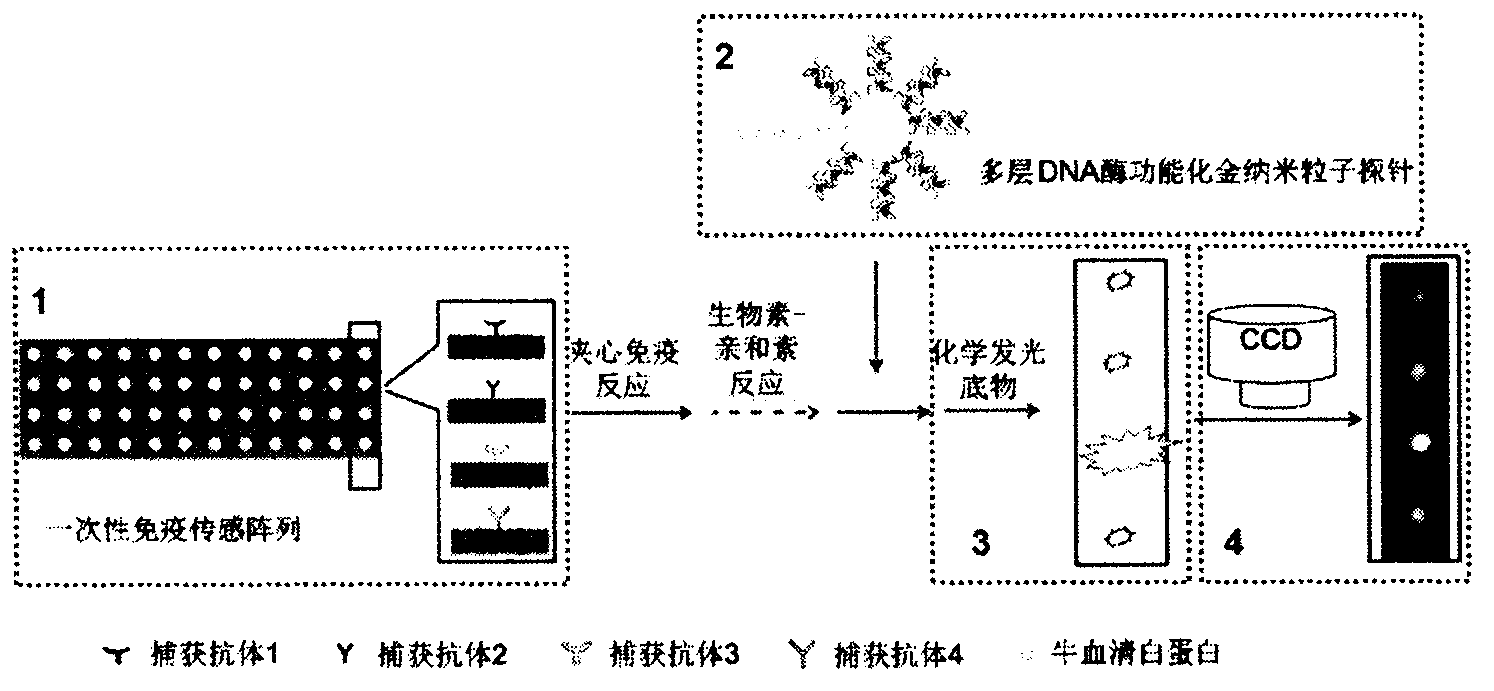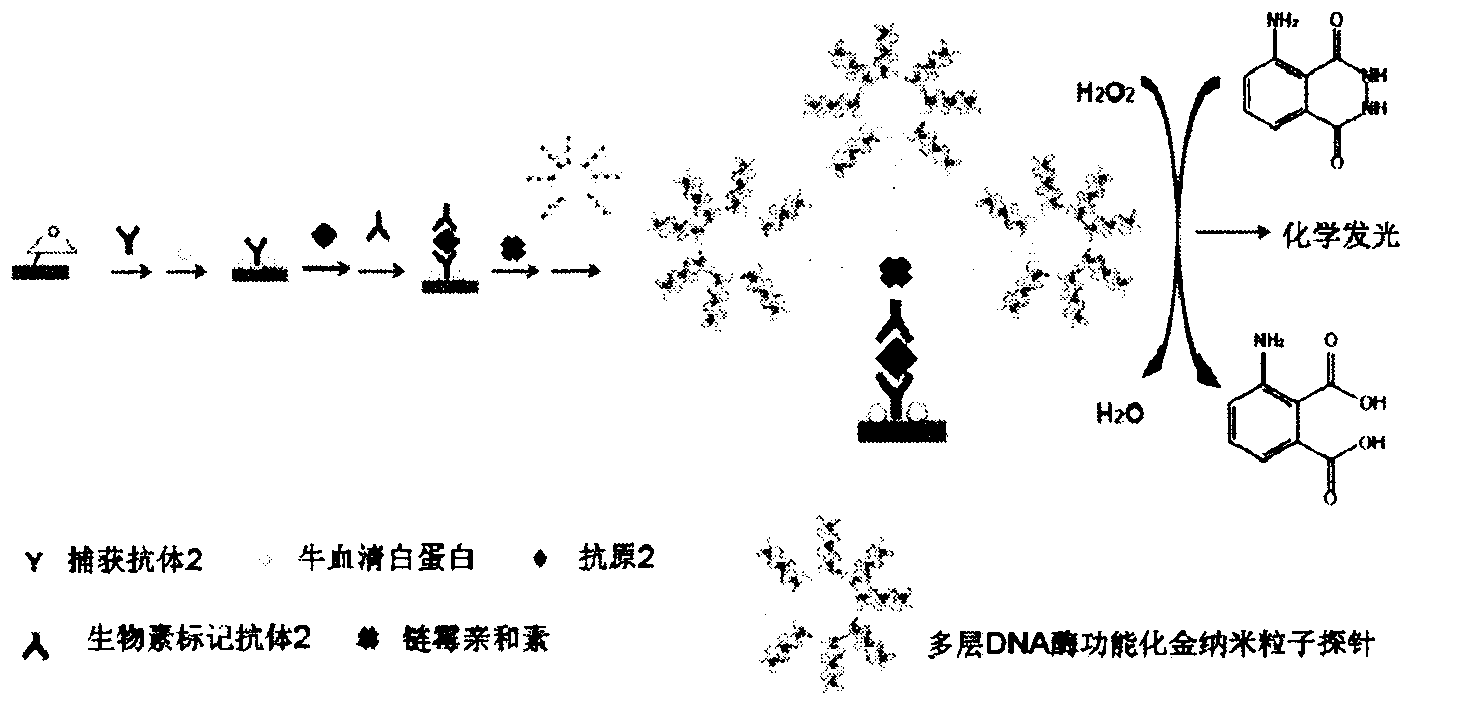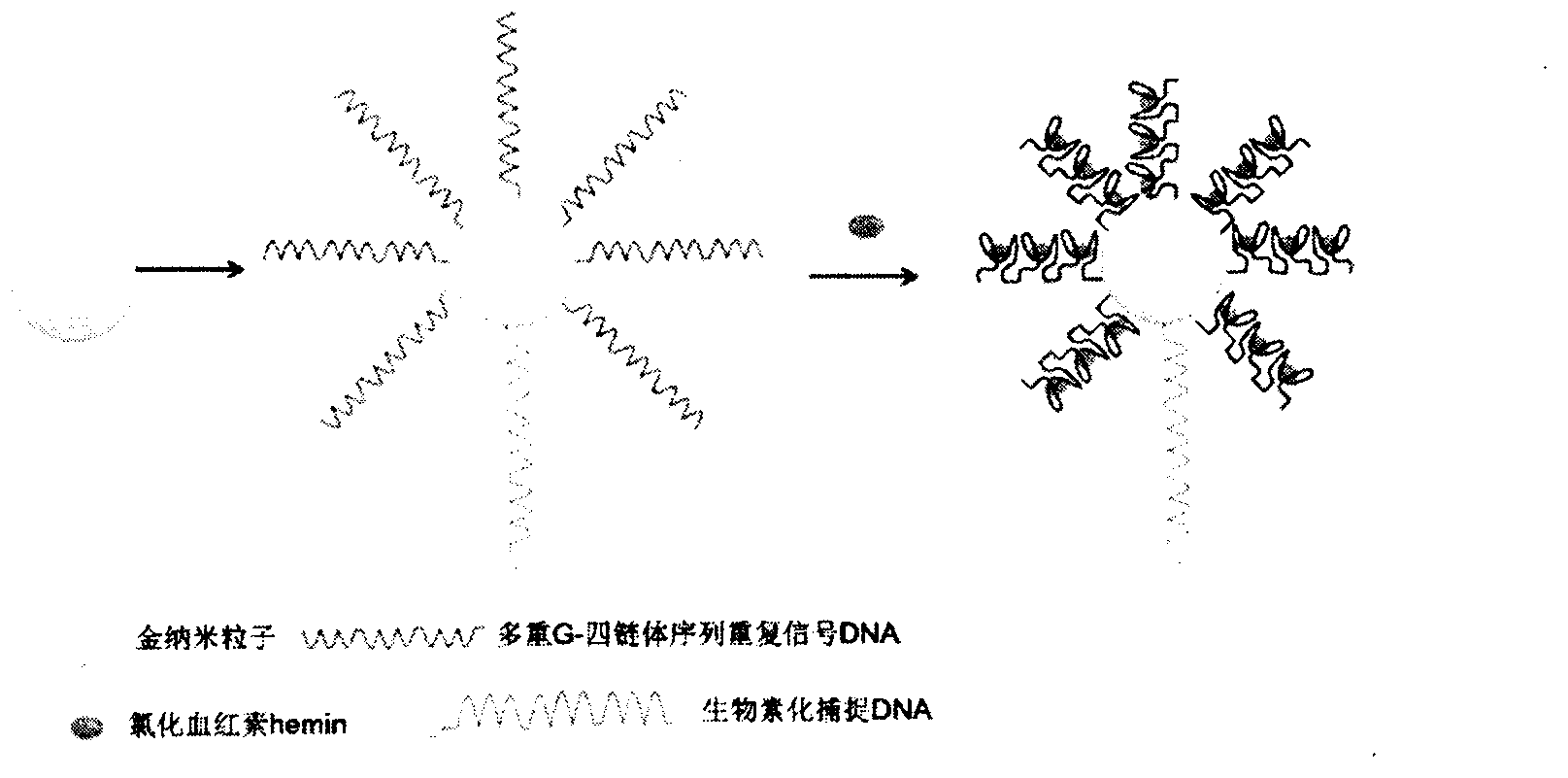High sensitive and jettisonable multicomponent chemiluminescent imaging immunosensor
A chemiluminescence and immunosensing technology, which is applied in the direction of scientific instruments, instruments, analytical materials, etc., can solve the problems of insensitive chemiluminescence detection signal and high price, and achieve the effect of improving detection sensitivity, low cost and high throughput
- Summary
- Abstract
- Description
- Claims
- Application Information
AI Technical Summary
Problems solved by technology
Method used
Image
Examples
Embodiment 1
[0024] Embodiment 1: in combination with image 3 , Preparation of multilayer DNase-functionalized gold nanoparticle probes
[0025] Synthesize gold nanoparticles with a particle size of 13nm, and two kinds of DNA single strands modified with sulfhydryl groups at the 5' end (including: signal DNA single strands containing multiple G-quadruplex sequence repeats, and capture DNA single strands modified with biotin at the 3' end Chain) according to a certain ratio, through the gold-sulfhydryl bond loaded on the gold nanoparticles. The specific synthesis details are as follows: Add 40 μL of 1 μM biotinylated capture DNA single-strand and 24 μL of 100 μM signal DNA single-strand to 1 mL of gold nanoparticles solution with a particle size of 13 nm, the ratio of capture DNA and signal DNA is 1:60, and stir at room temperature for 16 Hour. Then, a 0.01M PBS solution containing 2M NaCl was added dropwise to the above reaction solution, so that the final concentration of NaCl in the r...
Embodiment 2
[0026] Embodiment 2: in combination with figure 2 , preparation of immunosensor, sandwich immunoreaction, probe binding reaction and chemiluminescent signal generation and acquisition process
[0027] Screen-print 4×12 silanized arrays on glass slides, drop 1.5 μL of a certain concentration of capture antibody on the surface of each array point in each row, and let it absorb overnight at 4°C and 100% humidity; The amino group is covalently bonded to the epoxy group on the silanized glass slide, rinsed after the reaction, and after drying, drip blocking solution on the surface of each sensor, rinse with rinse solution after blocking for 1 hour, and dry to obtain a capture sensor. A total of 4 arrays of target antigens.
[0028] Drop the sample on the surface of the immunosensing array for incubation to bind the antigen to be tested, then wash the sample with the washing solution and add biotinylated antibody for incubation to form a sandwich immune complex and wash away unbou...
Embodiment 3
[0029] Embodiment 3: in combination with figure 2 , taking AFP, β-HCG, CA125, and CEA as examples to illustrate the application of this highly sensitive multi-component chemiluminescent image immunosensor
[0030] (1) Drop 1.5 μL of 10 μg / mL AFP, β-HCG, CA125 and CEA capture antibodies on the silanized surface of the array, the amino groups of the antibodies are covalently bonded to the epoxy groups of the slide, rinse after the reaction, and then The blocking solution was added dropwise on the surface of each sensing point, rinsed after sealing, and dried to make a disposable multi-component immune sensing array ( figure 2 );
[0031] (2) Add 1.5 μL of different concentrations of standard antigen or serum to be tested on the surface of each sensing point of the prepared immunosensing array, incubate at room temperature for 15 minutes, and wash with washing solution; Add 1.5 μL 2 μg / mL biotinylated AFP, β-HCG, CA125 and CEA antibodies to the surface of the sensor respectiv...
PUM
 Login to View More
Login to View More Abstract
Description
Claims
Application Information
 Login to View More
Login to View More - R&D
- Intellectual Property
- Life Sciences
- Materials
- Tech Scout
- Unparalleled Data Quality
- Higher Quality Content
- 60% Fewer Hallucinations
Browse by: Latest US Patents, China's latest patents, Technical Efficacy Thesaurus, Application Domain, Technology Topic, Popular Technical Reports.
© 2025 PatSnap. All rights reserved.Legal|Privacy policy|Modern Slavery Act Transparency Statement|Sitemap|About US| Contact US: help@patsnap.com



